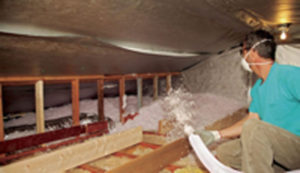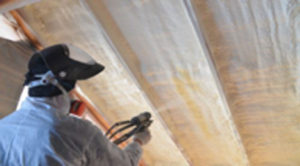How Does Insulation Conserve Energy?
Insulation creates a thermal barrier that helps your home hold onto the treated air coming from your HVAC system. Heat is always trying to move from warmer areas to cooler ones, which means that it’s infiltrating your home in the summer and escaping in the winter. This effect of thermal energy cannot be stopped entirely, but with sufficient insulation, it can be dramatically slowed. The end result is that your HVAC system runs less often, reducing what is usually the single largest energy expense in the home.
- Batt insulation: Batts are like thick blankets, and can be made of fiberglass, mineral wool or other fiber blends. It’s popular because it’s cheap, effective and easy to install, especially between the rafters in an attic floor.
- Blown-in insulation: This type consists of small, loose shreds of cellulose, fiberglass or mineral wool. As the name implies, it’s installed using an air pump and large hose that blows the insulating material into every nook and cranny, making it ideal for adding insulation to finished walls and hard- to-reach areas.

- Spray foam insulation: Professional installation of this insulation type is expensive compared to others, but it provides superior R-value per inch and is especially durable. Spray foam is also a superior choice for sealing air leaks.

- Rigid block insulation: Most insulating blocks are made of foam board or polyurethane and provide R-values per inch superior to batts and blown-in insulation. But because they’re rigid, they’re often impractical for adding insulation to existing structures. They’re ideal for installing in new construction.